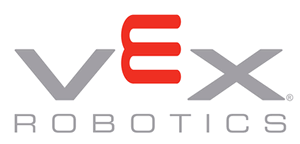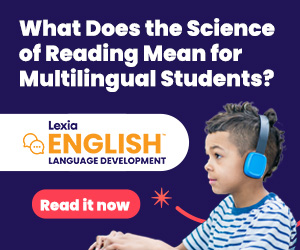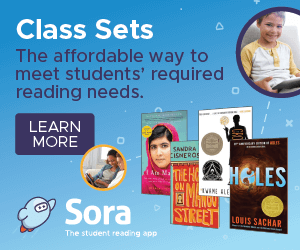Key points:
Student success is at the top of every educator’s mind–particularly as research is still emerging about the pandemic’s impact on learning loss.
Here are five strategies to explore as your school, district, or state focuses on boosting success for all children.
What are the main factors of student success?
Teachers must build strong, trusting, and collaborative relationships with their students in order to ensure student engagement increases and to boost their student success rate. Student engagement has long been an indicator of growth and progress, and in the wake of the pandemic, it will prove essential for academic and social-emotional recovery. Recent insights pulled from a survey of more than 2,000 identifies instructional practices that enable student engagement, no matter the learning environment. Using qualitative and quantitative survey data, here are five instructional practices for driving engagement.
Why is student success important?
The recent development of large language models (LLMs) like ChatGPT has opened entirely new possibilities for the design and implementation of computer-based tutors with the potential to help students succeed. While the underlying models like GPT-4 are more expensive to create than an intelligent tutoring system, they can span a wide range of domains of knowledge (from psychology to music history to computer programming to Spanish) once trained. They can also be “programmed” to mimic the interaction patterns of highly effective tutors in a number of ways, including lightweight techniques like prompt engineering and more resource-intensive techniques like fine-tuning. Healthy tutoring patterns in K-12 could contribute to student success in higher education. Learn more about how AI could advance computer-based tutors.
What creates student success?
Teachers want nothing more than to find success for struggling students–to do this, they need a deep understanding of their state learning standards. Assessments, by design, should show a stair step of understanding toward mastery of state-approved learning standards. But assessments also need to provide a clear picture of student understanding within those skills so teachers can take that information and fill in the gaps. While it creates an uncomfortable feeling for teachers to be thrown into the pond with assessment creation, it is also one of the most important steps educators can take to help accelerate student learning. This district is among student success examples–learn how a new look at assessments helped boost success.
What drives student success?
Last fall, ChatGPT, an AI-powered language model, became the subject of widespread discussion, from lighthearted memes about robots taking over to genuine confusion about the capabilities and implications of AI. While we have come to understand this technology better, there still remains hesitancy and caution surrounding AI and its integration into education. A prime example was the New York City School System, which had prohibited students and teachers from accessing ChatGPT’s website on school computers. However, it is essential for educators and instructional coaches to embrace emerging technologies like AI, as doing otherwise would mean doing our students a disservice. By integrating AI into the classroom, we have the opportunity to enhance teaching practices, coaching conversations, and ultimately support student success in innovative and meaningful ways. Discover how AI instructional coaching can be used in K-12 student achievement (and it has applications for student success in higher education, too).
What is your student success strategy?
Shrewsbury High School has been using online learning since the mid-1990s, says Nga Huynh, the school’s assistant principal. Since then, the school has expanded its use of the program and involved more students. Here are four tips for student success that school leaders learned along the way, and that other schools can use to get the most out of their online learning partners.
- SEO Powered Content & PR Distribution. Get Amplified Today.
- PlatoData.Network Vertical Generative Ai. Empower Yourself. Access Here.
- PlatoAiStream. Web3 Intelligence. Knowledge Amplified. Access Here.
- PlatoESG. Carbon, CleanTech, Energy, Environment, Solar, Waste Management. Access Here.
- PlatoHealth. Biotech and Clinical Trials Intelligence. Access Here.
- Source: https://www.eschoolnews.com/innovative-teaching/2024/02/02/friday-5-strategies-to-promote-student-success/
- :has
- :is
- 000
- 1
- 10
- 2%
- 250
- 30
- 5
- a
- About
- academic
- accelerate
- accessing
- advance
- AI
- AI-powered
- All
- along
- also
- among
- an
- and
- applications
- ARE
- AS
- assessment
- assessments
- Assistant
- At
- author
- BE
- became
- been
- Better
- boost
- boosting
- build
- but
- by
- CAN
- capabilities
- caution
- ChatGPT
- Children
- City
- classroom
- clear
- coaching
- collaborative
- College
- come
- computer
- computers
- confusion
- contribute
- conversations
- could
- create
- creates
- creation
- data
- deep
- Design
- Development
- Director
- discussion
- district
- do
- doing
- domains
- drives
- driving
- Editorial
- Education
- educators
- Effective
- embrace
- emerging
- emerging technologies
- enable
- engagement
- Engineering
- enhance
- ensure
- entirely
- Environment
- essential
- Every
- expanded
- expensive
- explore
- factors
- Fall
- feeling
- fill
- Find
- five
- focuses
- For
- four
- Friday
- from
- gaps
- genuine
- get
- graduate
- Growth
- had
- Have
- healthy
- help
- helped
- hesitancy
- High
- higher
- Higher education
- highly
- history
- How
- However
- http
- HTTPS
- identifies
- Impact
- implementation
- implications
- important
- in
- Including
- Increases
- Indicator
- information
- innovative
- insights
- instructional
- Integrating
- integration
- Intelligent
- interaction
- into
- involved
- IT
- ITS
- journalism
- jpg
- knowledge
- language
- large
- leaders
- learned
- learning
- lightweight
- like
- Long
- Look
- loss
- Main
- Maryland
- mastery
- Matter
- mean
- meaningful
- Media
- memes
- merrill
- model
- models
- more
- most
- Music
- must
- Need
- New
- New York
- new york city
- no
- nothing
- number
- of
- on
- once
- ONE
- online
- Online Learning
- opened
- Opportunity
- or
- order
- Other
- otherwise
- our
- out
- over
- pandemic
- partners
- patterns
- photo
- picture
- plato
- Plato Data Intelligence
- PlatoData
- points
- POND
- possibilities
- Posts
- potential
- practices
- prestigious
- Principal
- Program
- Programming
- Progress
- prohibited
- promote
- Prove
- provide
- Psychology
- qualitative
- quantitative
- range
- Rate
- recent
- recovery
- Relationships
- remains
- research
- resource-intensive
- robots
- s
- School
- Schools
- she
- should
- show
- since
- skills
- So
- span
- Spanish
- standards
- State
- Step
- Steps
- Still
- strategies
- Strategy
- strong
- Struggling
- Student
- Students
- subject
- succeed
- success
- support
- Surrounding
- Survey
- system
- Take
- taking
- teachers
- Teaching
- techniques
- Technologies
- Technology
- than
- that
- The
- their
- then
- There.
- they
- this
- those
- tips
- to
- too
- top
- toward
- trained
- trusting
- Tutoring
- Ultimately
- uncomfortable
- underlying
- understand
- understanding
- university
- University of Maryland
- URL
- use
- used
- using
- Wake
- want
- was
- Way..
- ways
- we
- Website
- which
- while
- wide
- Wide range
- widespread
- will
- with
- within
- would
- york
- Your
- zephyrnet













